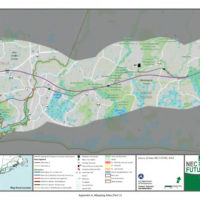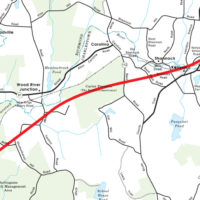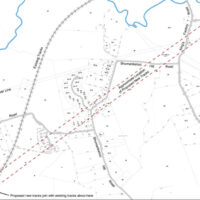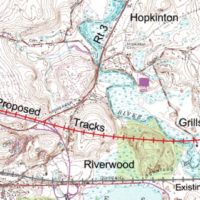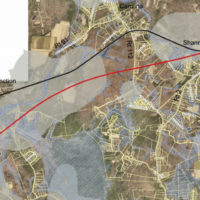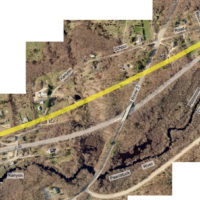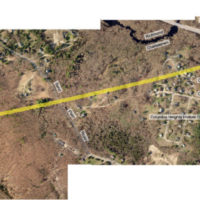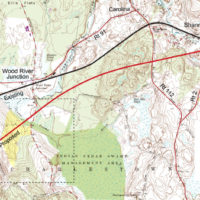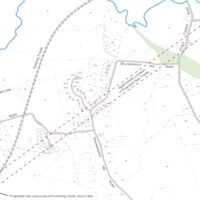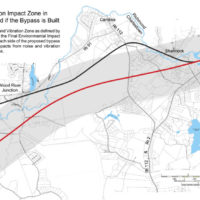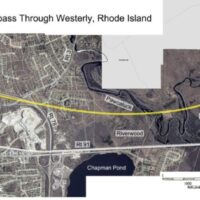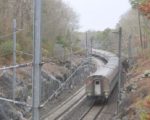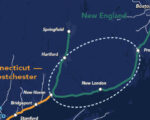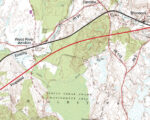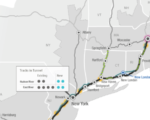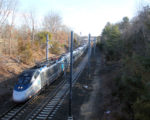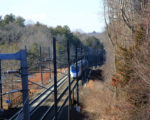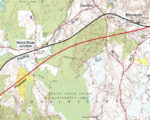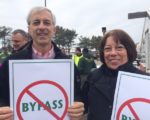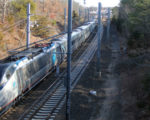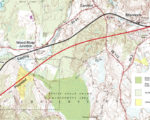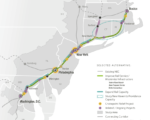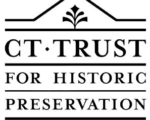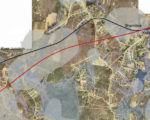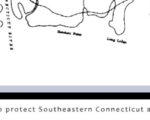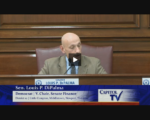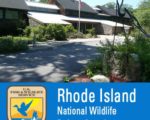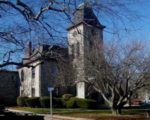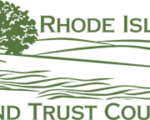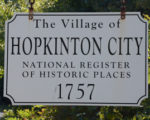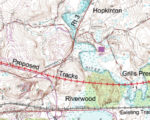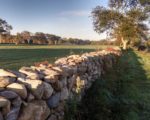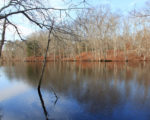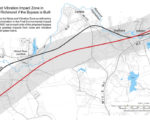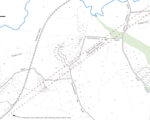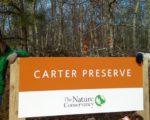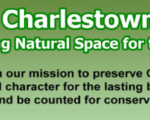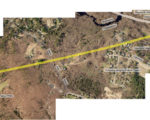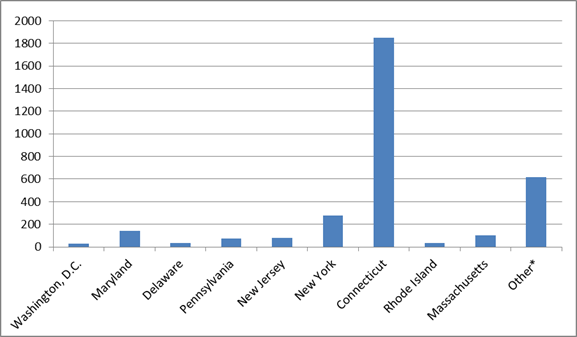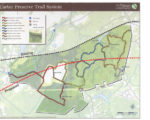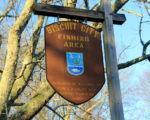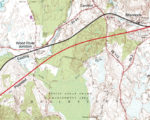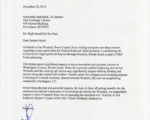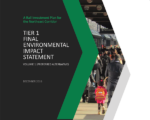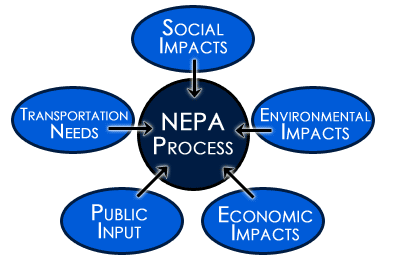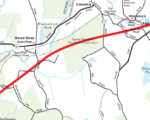The Federal Railroad Administration released their Record of Decision on July 12, 2017 and dropped the “Old Saybrook to Kenyon Bypass” from the plan. Great news and a big win for Charlestown, however a study is required that leaves the door open to the Bypass. We will be working to shut that door!
We Are In This To Win – Now And Long Term!
On December 16, 2016 the Federal Railroad Administration (FRA) released their Tier 1 Final Environmental Impact Statement (EIS) to straighten the tracks of the Northeast Corridor over the next several decades. Charlestown lies in the “Old Saybrook to Kenyon Bypass” section of the plan. At that stage it was a plan, not an action, but the line they drew through Charlestown, Westerly, and Old Saybrook area of Connecticut would have been harder to move as time went by, so community action and involvement was critical in removing it from the Record of Decision (ROD). The July 12, 2017 ROD calls for a study that could possibly bring back the Bypass. We will remain vigilant throughout this study process to work to stop the Bypass from being resurrected.
We will use this page to share information on this project as it continues to develop and announce any public meetings or actions.
You can read the Record of Decision (ROD) at the NECFuture website
You can also read the Tier 1 Final EIS that preceded the ROD at the NECFuture website
For the federal officials and Governor you can send emails or make telephone calls. The links below will take you to pages with information on both options.
United States Senators
Jack Reed – https://www.reed.senate.gov/contact/email
Sheldon Whitehouse – https://www.whitehouse.senate.gov/contact/email-sheldonUnited States Representative
Jim Langevin – https://langevin.house.gov/contact-me/email-meGovernor Gina Raimondo
http://www.governor.ri.gov/contact/State Senators
Dennis Algiere – sen-algiere@rilin.state.ri.us
Elaine Morgan – ElaineForSenate@aol.comState Representative
Blake Filippi – BlakeFilippi@blake36.comPlease use this email for questions on this topic to members of the Town Council:
Amtrak-Comments@charlestownri.orgJoin one or both of our email lists at http://charlestowncitizens.org/elist/
Like us on Facebook
Join the Facebook Group formed to oppose the Railroad Rerouting
SECoast is a Group in Connecticut fighting the proposal.
Charlestown resident Kevin Tanner has set up a petition at MoveOn.org to let State and Federal officials know there is local opposition to the proposed railway path in Charlestown. The petition already has over 1000 signatures.
You can go to the petition and read all about it by clicking on the button below.
Sign The PetitionMoveon.org has its own political point of view, but the content of the petition is that of the person who sets it up. If you sign the petition, you’ll get an email confirming and suggesting you invite your friends to sign. You’ll then get an email from moveon.org. You can unsubscribe from the moveon.org list if you want by going to the bottom of the email and click on the link to remove yourself.
Please feel free to download and use maps and other images of the Charlestown area that you find at the Charlestown Citizens Alliance website on the Railroad issue, but also please credit the Charlestown Citizens Alliance and provide a link to http://charlestowncitizens.org/ where possible. All maps, except the map captioned “EIS Map Showing Path Through Westerly and Charlestown”, were created by CCA volunteer Cliff Vanover. The data sources are Town of Charlestown GIS data and URI Environmental Data Center. Questions on this policy and any other issue should be directed to mail@charlestowncitizens.org
The Federal Railway Administration plans to bisect Charlestown with a new high-speed track that runs from its western edge through homes in the bucolic Burdickville village, across a four-generation farm-to-table operation on top of Schumankanuc Hill, over Native-American tribal land through the center of the 1,112-acre Carter Preserve (owned by The Nature Conservancy), and splitting the Revolutionary-era Amos Green Farm, adjacent properties protected by conservation easements, and federally funded Historic Columbia Heights housing, then over Historic Kenyon to reconnect with the existing railroad near the eastern edge of town in the Great Swamp.
This is caused by the “Old Saybrook to Kenyon Bypass” which is part of the “preferred alternative” in the Tier 1 Final EIS.
Perhaps no time at all is saved by creating a straighter rail line through Charlestown.
Currently the path of the existing NEC tracks travel around Sumankanuc Hill. The Acela currently averages 100mph on the existing tracks through Charlestown and Richmond according to Charlestown Police radar.
The NEC Future plan requires a mile long tunnel through Sumankanuc Hill. According to Amtrak officials who attended our public Hearing on Jan 10th, fast trains have to slow to 80 to 90 mph to go through a tunnel and they need to start decelerating long before the tunnel.
It’s possible the new path through Charlestown would in fact be slower than the current path.
Well over $1 Billion in Charlestown alone!
The NEC Future plan estimates $130 Billion for the proposal from Washington DC to Boston, but they don’t break down costs for individual segments.
A mile of tunneling for train tracks costs $1 Billion. So the Bypass in Charlestown will cost more than $1 Billion for construction and years and millions of dollars in law suits before construction can start.
Rhode Island will be required to pay part of this cost, probably 20% similar to other federal transportation projects.
Upgrading the existing rail bed instead of creating a new route as part of the Bypass will save RI taxpayers 100s of millions of dollars.
Probably not in our lifetimes because of a political block in Connecticut and local law suits.
The state of Rhode Island, five municipalities, land trusts, and the Narragansett Indian Tribe are obligated to go to court to protect conservation easements on dozens of properties conserved in perpetuity which the Bypass threatens to destroy.
The Governor of Connecticut, their entire Congressional Delegation, their state Legislature, and every municipality in the path of the Bypass oppose the Old Saybrook to Kenyon Bypass and are committed to never allowing it to be built. The Bypass requires state funding so unless all of these governments change their position, the Bypass is blocked in Connecticut.
Rather than facilitating high speed rail, the destructive nature of the Bypass proposal will block any improvements in speed or time in the Northeast Corridor.
With a more practical vision we could get investment in rail in the right places and in the right way and we could get it a lot sooner without sacrificing Narragansett Tribal land, public parklands, protected open space, wetlands, tourism assets, active farms, historic mill villages, and private homes.
Links below are to letters of opposition written to the Federal Railroad Administration. We don’t yet have links to all documents. If we’ve missed anything, please let us know.
International Organizations
The Nature ConservancyNational Organizations
National Trust for Historic Preservation
NEC Commission (Membership from NEC states, Amtrak, and U.S. Department of Transportation)Native American Tribes
Narragansett
Mashantucket Pequot
MoheganFederal Agencies/Departments
US Fish and Wildlife Service
The United States Department of InteriorState Agencies/Departments
Rhode Island Division of Planning
Rhode Island Historical Preservation and Heritage CommissionRhode Island’s Federal and State Delegations
Rhode Island’s Congressional Delegation
Rhode Island’s US Representative Jim Langevin
Rhode Island Governor Gina Raimondo
The Entire South County House and Senate membersConnecticut’s Federal and State Delegations
Connecticut’s US Senator Richard Blumenthal and US Representative Courtney
Connecticut’s US Senator Chris Murphy
Connecticut Governor Dannel P. Malloy
Connecticut State Senator Paul Formica
Connecticut State Senator Heather Somers
Connecticut State Representatives Joe De la Cruz, Chris Conley and Devin Carney
Connecticut Deputy Secretary of State Scott BatesRhode Island State or Regional Organizations
The Wood Pawcatuck Watershed Association
The Rhode Island Land Trust Council
South County Tourism Council
Rhode Island Association of Railroad Passengers Opposes Bypass in CharlestownConnecticut State or Regional Organizations
CT Trust for Historic Preservation
SECoast
Eastern CT Chamber of Commerce
Connecticut Fund for the EnvironmentRhode Island Local Organizations
The Charlestown Citizens Alliance
The Charlestown Land Trust
Charlestown Agricultural Preservation Commission
Westerly Land Trust
South Kingstown Land Trust
Columbia Heights Home Owners
Greater North End Community Development (Westerly)
Ocean Community Chamber of CommerceConnecticut Local Organizations
Greenwich Preservation Trust
Greenwich Historical Society
New London City Center District
Hodges Square Village Association
New London Landmarks
New London Political Parties
New London Main Street
The Riverside Park Conservancy
Southeastern Connecticut Enterprise Region
Mystic Seaport Museum
Mystic Aquarium
Mystic Chamber of CommerceRhode Island Municipalities
Charlestown Rhode Island
Richmond Rhode Island
Westerly Rhode Island
Hopkinton Rhode Island
South Kingstown Rhode Island
Exeter Rhode Island
Jamestown Rhode Island
Burrillville Rhode IslandConnecticut Municipalities
Lower Connecticut River Valley Council of Governments: Chester, Clinton, Cromwell, Deep River, Durham, East Haddam, East Hampton, Essex, Haddam, Killingworth, Lyme, Middlefield, Middletown, Old Lyme, Old Saybrook, Portland, and Westbrook
The Southeastern Connecticut Council of Governments: Bozrah, Colchester, East Lyme, Franklin, Griswold, City of Groton, Town of Groton, Jewett City, Lebanon, Ledyard. Lisbon, Montville, New London, North Stonington, Norwich, Preston, Salem, Sprague, Stonington, Stonington Borough, Waterford, and Windham
GreenwichThe NEC Future plan is prepared by Parsons Brinkerhoff/AECOM Joint Venture along with help from staff at the Federal Railroad Administration.
It’s reported that the NEC Future plan has cost $40 million so far for planning, publications, macro scale engineering, etc.
According to the NEC Future website, the new path of the rail lines would cut off an estimated 45 minutes of travel time between New York and Boston. This number was originally set at 20 minutes. It’s not clear where the FRA gets the time estimates from.
Connecticut officials estimate that 20 minutes of this time savings between New York and Boston could be achieved now if only some of the money proposed for the FRA plan were invested in present rail structures, bridges, and rails we could achieve faster and safer rail travel now and not have to wait years for the FRA plan. For instance there are two road crossings that the train is still making in Stonington, putting citizens lives at risk with only seconds to get out of a stalled car before a train crosses the road. There is a bridge over the Connecticut River where the train must slow down to 35 miles per hour because of the poor condition of the bridge. These are changes we should be making now.
As little as they could and still be within law – although some will make the case that they didn’t follow the minimum legal requirements.
The Federal Railroad Administration (FRA) failed to communicate in a meaningful way.
On December 18, 2016, both the citizens and government of Charlestown Rhode Island first became aware of the NEC Future Tier 1 Final EIS and the plan to add a new section of rail through Charlestown. That notice came from our organization, the Charlestown Citizens Alliance (CCA). A member of our Steering Committee had seen a television news story on December 16 about the plan’s impact on Providence, had then read the Final EIS, and published a story about the impacts to Charlestown at the CCA website. That post at http://charlestowncitizens.org/2016/12/18/christmas-surprise-from-fra/ was seen by over 25,000 people at our website and shared with thousands more on social media and was the first clear and meaningful communication that residents of Charlestown received on this issue.
The Town of Charlestown and its citizens were not aware or involved in the scoping process that began in 2012, and we were not aware of the Draft EIS or of any comment periods in 2015.
On December 29, 2016, the town received a form letter from the Federal Railroad Administration, dated December 16, announcing the availability of the Tier 1 Final EIS. The form letter gives no hint that the Plan has any relevance to or impact on Charlestown. Had the town not become aware of the impact on Charlestown from CCA’s publication, the letter from the FRA might not have triggered a timely response. The receipt date of December 29 would have also reduced the time to respond by an additional 11 days. The timing of the release of the EIS during the Christmas holiday season also served as an impediment to a complete and timely response.
At the draft EIS stage in 2015, a form letter was reported by the FRA to have been sent to the Narragansett Tribe and the following Rhode Island towns: East Providence, Pawtucket, Providence, Warwick, Cumberland, East Greenwich, Exeter, Foster, Glocester, Charlestown, Hopkinton, Johnston, North Kingstown, Richmond, Smithfield, South Kingstown, Westerly, Cranston, and Central Falls. Only the urban cities of Providence, Central Falls, and Pawtucket responded, but they received other forms of notice and promptings to help them gain awareness of the process. Most of these governments have no recollection of receiving communication from the FRA. The letter does not say that new rails and a new rail route are proposed in your community. When no comments came from one of the most impacted towns, this should have suggested to the FRA that the local community and local stakeholders were not aware and engaged in the review process.
Charlestown is not named in any of the materials at the NEC Future website, not in the Draft EIS or the Final EIS. The Town is impacted because it lies along the “Old Saybrook to Kenyon Bypass” where two new rails will be added in a new location. This bypass is described in Chapter 7.1, “New or Upgraded Segments”, as having the highest acreage’s of impact. As a town with these extreme levels of impact, the FRA should have ensured that Charlestown was engaged and involved from the earliest stages.
The Tier 1 Final EIS is deficient with respect to impacts in Charlestown, and the entire EIS process from scoping in 2012 until and including the December 2016 release of the Final EIS has not followed the spirit of the National Environmental Policy Act (NEPA). These two findings are related as the failure to follow the spirit of NEPA and actively engage and collaborate with the affected community and local stakeholders has resulted in significant omissions in the natural and cultural resource data. The FRA’s use of incomplete data has resulted in gross underestimations of impact.
NEPA requires a scoping process that is the period in which the federal agency and the public collaborate to define the range of issues and possible alternatives to be addressed in the EIS. During the FRA scoping process, which appears to have started in February 2012, would have been the best time to engage the local towns and discover what parklands and natural, cultural, and agricultural resources existed in the Bypass area.
Flaws in the EIS in Charlestown are mainly caused by the omission of the following from the data in and near Charlestown:
- The size of the Grills Preserve in nearby Westerly is underestimated. The Grill’s Preserve is a 550-acre conservation area with over 2 and 1/2 miles of river frontage. The EIS lists this as 480 acres. There is an extensive trail system, with 6 miles of trails, including a cross-country loop that is used by the Westerly High School and Middle School teams. The Preserve has diverse habitats including streams and ponds, freshwater marsh, wetland forest, upland forest, and sandy pitch pine and oak areas being managed for New England cottontail rabbit. Otter and bobcat have been seen in the Preserve. Thirteen species of rare plants have been identified, some living nowhere else in Rhode Island. The proposed path of the rail lines would cut through this preserve.
- The Riverwood Preserve in nearby Westerly is omitted from the EIS data. Riverwood Preserve is part of the Westerly Land Trust’s Pawcatuck River Corridor Initiative. It consists of 148 acres of woodland, rocky ridges and fresh water wetlands adjacent to the Pawcatuck River and the Boy Scout Camp. There are extensive trails covering a wide variety of terrain. The proposed path of the rail lines would cut through this preserve.
- After passing through Burlingame, which the EIS acknowledges as an impacted parkland property, the proposed rail lines pass through Hidden Meadows Open Space. The Town of Charlestown owns a permanent conservation easement on this 25.3-acre conservation/passive recreation area. This parcel is contiguous on four sides with larger parcels of Burlingame and a 7 acre parcel of conservation land of The Nature Conservancy. Both of these protected conservation areas are omitted from the EIS.
- After passing through private homes, the rails cut across Burlingame Estates Open Space, a 31.5-acre conservation/ passive recreation open space omitted from the EIS. The Town of Charlestown owns a permanent conservation easement on this property.
- The Burlingame Estates open space parcel and the Hidden Meadows open space are contiguous with the 124.58 state owned conservation land. It lies between them. The new rails pass through this state owned and permanently protected property, but it is omitted from the EIS.
- The rails then pass through about a dozen homes before entering the 142-acre Stoney Hill Cattle Company. This is a farm to table operation with cows, horses, hay, pigs, and chickens. They sell grass fed beef, pork, chickens, eggs, and Thanksgiving turkeys at the farm and at farmers markets. This farm is enrolled in the Farm Forest and Open Space (FFOS) program. Under this program the farmer has given up the right to develop their land for an extended period, usually 15 years or longer. Protecting, preserving, and promoting this type of farming operation is a priority of both the town and state. This farm and its important status are omitted from the EIS.
- The rails then pass through or close by another farm. This farm is a 39-acre farm, contiguous with the Stoney Hill Cattle Company and also nearly contiguous with tribal conservation land across Kings Factory Rd. and Shumankanuc Rd. This farm is omitted from the EIS.
- Another wooded farm contiguous with the Stoney Hill Cattle Company. This property recently placed a permanent conservation easement on 45 acres. The Nature Conservancy and the Charlestown Land Trust hold the permanent conservation easement jointly. In December of this year The Nature Conservancy announced the new conservation easement as follows, “The 45 acre Heinz property is just southwest of the Carter Preserve, and contributes to a growing corridor of conservation along the Pawcatuck River.” This farm does not appear to be in the direct path of the train but it is close by and contiguous with other farms that are in the train’s path. This farm and its status as legally protected/conserved land are omitted from the EIS.
- The train then crosses Shumankanuc Rd. and enters Narragansett Tribal Land. This parcel was formerly part of the Indian Cedar Swamp Management Area, a RI state wildlife management area. When it was transferred to the Tribe in 1978 as part of the Settlement Act, it was transferred with a permanent conservation easement that requires the land always remain conservation land and not ever be developed. The Tier 1 Final EIS claims that no tribal land is crossed or impacted anywhere by the plan for high-speed rail anywhere in the corridor from Washington DC to Boston. But in this case, tribal land is crossed and that land also is protected by a conservation easement.
- The proposed rail lines then cross a 59-acre farm contiguous with the Pawcatuck River and the Carter Preserve. This farm is omitted from the EIS.
- The new rail line then crosses Kings Factory Rd. and the Botka Woods Open Space. This 116-acre Open Space has been recently approved for a permanent conservation easement to be held by the Town of Charlestown and is omitted from the EIS
- After passing through the power line (green way) and 4 or 5 houses the proposed train tracks enter the 1,112-acre Francis C. Carter Memorial Preserve. Owned by the Nature Conservancy this property was acquired with help from The Champlin Foundations, the Doris Duke Charitable Foundation, and the Cove Point Foundation. The property supports a variety of natural communities, most notably rare pitch pine/scrub oak barrens, vernal pools, and a 70-acre grassland. This preserve is one of the largest protected properties in the state, but it was entirely omitted from the EIS. It joins several thousand acres of contiguous forest and contributes to an 11-mile corridor of open space running from the Ninigret National Wildlife Refuge to the state’s Carolina Management Area. This conservation property has a strong policy supporting public access for passive recreation. There are 7 miles of hiking trails, access for equestrians and bow hunting in season. The proposed rail lines run the length of the Carter Preserve fragmenting it into two roughly equal pieces.
- The new rail lines leave the Carter Preserve at Rt. 112, pass through a three or four frontage lots on Rt. 112 and then enters the Amos Green Farm. The Amos Green farm is a colonial era farm that is preserved in museum quality and is still a private residence. The 101-acre farm is preserved with conservation easements held by the Charlestown Land Trust. It has recently been the site of Colonial Reenactments sponsored by the Charlestown Historical Society and is open to the public for other special events. The Amos Green Farm is contiguous with another farm, Fenner, an 85-acre farm protected by a permanent conservation easement held by the Town of Charlestown and the State of Rhode Island. The two permanently protected farms make up about 185 acres of contiguous farmland that will be fragmented by the proposed rail lines. None of this permanently preserved agricultural land is mentioned in the EIS.
- Another parcel with 62 acres forested open space omitted from the EIS
- Moving eastward the proposed route leaves protected open space and passes through or over residential land and then enters the Columbia Heights Historic District. This Historic District is another data omission in the EIS. Historic homes will be removed here for rails at grade. This is a very compact neighborhood. This entire Historic District is eligible for inclusion in the National Historic Register. The Arial Structure for the rails over Kenyon will be seen from the Shannock Historic District, which is entirely on the National Historic Register. Both of these communities’ statuses as eligible low/moderate income communities are omitted from the EIS.
- The rails will pass over Shannock Road, a State Scenic Road, and the first road in the state to receive this designation. The State Scenic Road designation of Shannock Road is another data omission in the EIS.
- The rails then pass over the Historic District of Kenyon. The Kenyon Historic District is eligible for inclusion in the National Historic Register. This is an eligible low/moderate income community. Kenyon’s historic and low/mod status is omitted from the EIS.
- The Biscuit City Fishing Area, a Pawcatuck River access point provides parking for anglers and canoeists. This fishing area was developed with Federal Fisheries Funds and RI Division of Fish and Wildlife funding. This access will be removed by the new rail project. The new rails will pass through here as they reconnect with the NEC in the Great Swamp. The loss of this federally funded fishing access is omitted from the EIS.
- The Pawcatuck River and Wood Pawcatuck River are crossed several times in Charlestown and Westerly by the new train tracks. These rivers are nominated by Congress as Wild and Scenic Rivers. They are protected from development by the ongoing Wild and Scenic study sponsored by the National Park Service. The EIS does not list any Wild and Scenic Rivers in Rhode Island.
- There are at least four other farms in the vicinity of the new rail lines omitted from the EIS.
- The area proposed for new rails in Charlestown is within the acquisition area of the Great Thicket National Wildlife Refuge, a NWR dedicated to conserving and managing shrub land and young forests for wildlife. The refuge is meant to support American woodcock, New England cottontails, monarch butterflies, ruffed grouse, golden-winged warbler, box and spotted turtles, whippoorwill, blue-winged warbler, and Hessel’s hairstreak among other species. The EIS does not mention the Great Thicket National Wildlife Refuge.
These omissions from the EIS represent 1,797 or nearly 1,800 acres of permanently protected open space that the rails pass through and will be fragmented. There are also many other open space properties that are protected with permanent conservation easements that are in this vicinity that the rails don’t pass through, but that are also omitted from the calculations having to do with context.
Where the Town, State of Rhode Island, local Land Trusts, or The Nature Conservancy hold a permanent conservation easement they have a legal obligation to stop the sale or conversion for a use other than conservation/passive recreation/agriculture as specified in the easements. They will have a legal obligation to object to the sale or taking of these lands by Amtrak.
The 1,800-acre figure does not include active farms bisected by the rail project. Most of these farms are entered into the Farm Forrest and Open Space program. These active farms that will be removed or damaged to the point that they can no longer be viable farms account for another 450 acres that were omitted from the EIS.
Now the Tier 1 Final EIS has been published, and the results of this flawed NEPA process are apparent in the documents. In the Charlestown area of the “Old Saybrook to Kenyon Bypass” the EIS has data omissions and erroneous decisions in the following areas:
- Land Cover
- Agricultural Lands
- Parklands and Wild and Scenic Rivers
- Hydrologic/Water Resources
- Ecological Resources
- Geologic Resources
- Hazardous Waste and Contaminated Material Sites
- Cultural Resources and Historic Properties
- Visual and Aesthetic Resources
- Environmental Justice
- Noise and Vibration
- Section 4(f) and Section 6(f) Resources: Parklands converted to transportation use, including publicly owned public parks, recreation areas, and wildlife/waterfowl refuges; Converted lands or facilities that were acquired with Land and Water Conservation Fund Act funds; Historic resources converted to transportation use, including historic sites of local, state or national significance (eligible or listed)
For a full discussion of these, see the Charlestown Citizens Alliance response to the Tier 1 Final EIS
The existing rail lines will remain and be used for freight trains and other slower moving trains.
Mitigation planning.
Most of the impacts in Charlestown can’t be mitigated. All of the land between the existing rails, the proposed rails, and Tribal land is occupied by the Carter Preserve. NEC Future has made clear a preference to avoid tribal land. For the rails in the Carter Preserve there is no place to move the rails to avoid parkland conversion except back into the existing rail lines or across more tribal land. The other suggested mitigation strategies would not be effective as the land supports species that depend on un-fragmented open space.
Similarly moving the proposed rail lines to avoid one group of homes will impact others.
The proponents of the Plan will say this is just an example route, but on examination the route is the least disruptive as they have threaded the impacts to avoid homes. They may tweak the line, but very little will change.
Map Gallery - Click on any image to enlarge
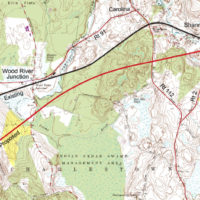
- Public Open Space, Permanent Conservation Easements, and Tribal Conservation Land in Green. Active Farms in Yellow.
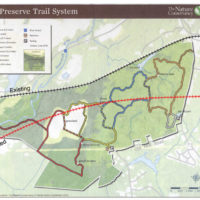
- Approximate location of proposed new high speed tracks through Carter Preserve in red. Existing tracks to remain for freight and other trains in black. Map by TNC, but rail tracks added by C. Vanover.
